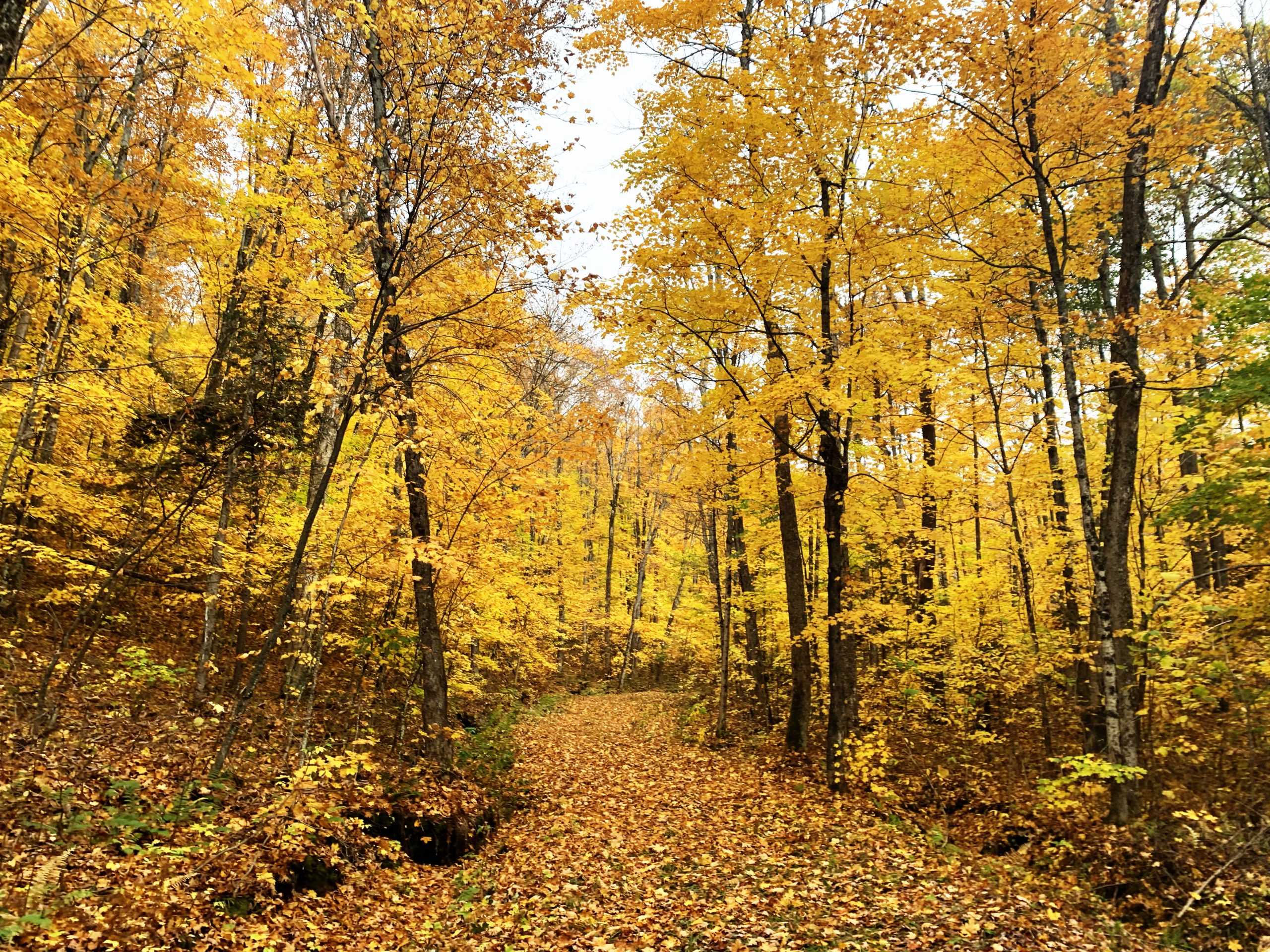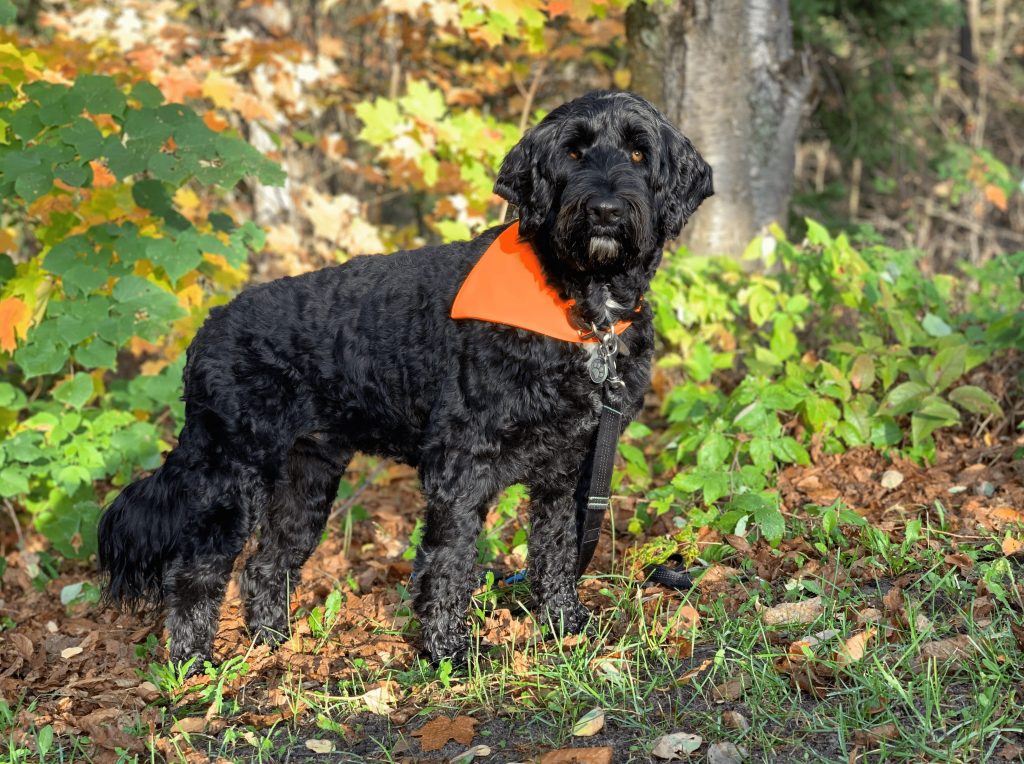The splendor of a November hike with the backdrop of a golden tamarck stand
Long after the first frost has singed the tender greens and felled the flaming red leaves off the maple trees, a second insurgence takes hold in our northern forests that transforms nature’s pallet. November heralds in the spectacular golden hue of the tamarack in North Bay and reveals a hidden world unseen in the warmer months.
Set against the dark backdrop of the evergreens, the tamarack’s deep golden-yellow glow is a picture-perfect reason to keep hiking boots ready to explore the local trails. When on the hunt for the best Instagram-worthy trees, it’s good to know that tamarack, also known as American Larch is a member of the pines family so it thrives in poor soils like are found at the edge of swamps and bordering wetlands. The tree’s wet feet make the wood extremely resilient and is the reason our Indigenous ancestors used its roots for snowshoes and to stitch together birch-bark canoes. In fact, the word akemantak is an Algonquian name for tamarack and means “wood used for snowshoes”. Laurier Woods in North Bay, the Cranberry Trail in Callander and the Loudon Peatland Trail at Mashkinonje Provincial Park are all great trails that showcase beautiful tamarack stands.

Glacial erratic on the Forgotten Trails Association’s Tower Trail near South River
Another marvel of a late Fall hike is the undulating landforms and rock formations revealed in the leafless forest, unseen in the summer months when thick foliage gets in the way. One can only imagine the enormous sheet of ice over 1 km thick that crushed the earth during the Ice Age, carving into the hard granite of the Canadian Shield and creating hills and depressions as it advanced and melted back many times over the millennia. As the glaciers retreated for good, they acted like giant bulldozers plowing the land while carrying and polishing boulders and other materials along the way. Large boulders known as glacial erratics were scattered seemingly at random as the glaciers melted and can be seen on many of the local trails like the Corbeil Nature Trail at the Corbeil Conservation Area or, pictured here, the Laurier Tower Trail near South River.

Golden Glow along the Laurentian Escarpment Trails
It’s important to remember that here in Northern Ontario we have a rich culture of hunting and gathering. As the Fall winds blow, the exodus from the urban centre begins as many northerners enjoy the solitude of backcountry hunt camps and wandering across Crown lands in search of game. With many of our favourite trails on public lands where hunting is permitted staying visible while sharing this precious resource is a critical part of safely experiencing the local trails. It’s important to follow a few tips when getting out to wander.
- Be aware of hunting seasons in the area. Dates change year-to-year and vary district to district. A good rule of thumb is to assume you are not alone on Crown lands and that hunters may be present any time after mid-October. Check with the MNR for specific dates.
- Wear brightly coloured clothing – hunter orange is best. Avoid wearing white, especially white mittens or hats. These can appear as a deer’s tail through the trees!

Loki dressed for the season on the trails in North Bay
- Don’t forget Fido! A brightly colored vest or sweater is not just a fashion statement – dogs can easily be mistaken for a forest dweller. Many local trails require dogs to be leashed but even if not it is always a good idea on any trail.
- Stay on official, marked trails. This is not the time to go geocaching or bushwacking.
- Make noise. Sing, carry a bell or chat loudly with your companion to scare off the deer – and hunters.

t/sdcard/DCIM/100GOPRO/GOPR2003
Hiking to the viewpoint on the Laurier Tower Trail one of the Forgotten Trails in South River
In the timeless words of Henry David Thoreau, “Live in each season as it passes; breathe the air, drink the drink, taste the fruit, and resign yourself to the influence of the earth.” So true is November, not to be forgotten as a great time to lace up your boots and embrace the peaceful solitude of the forest.


